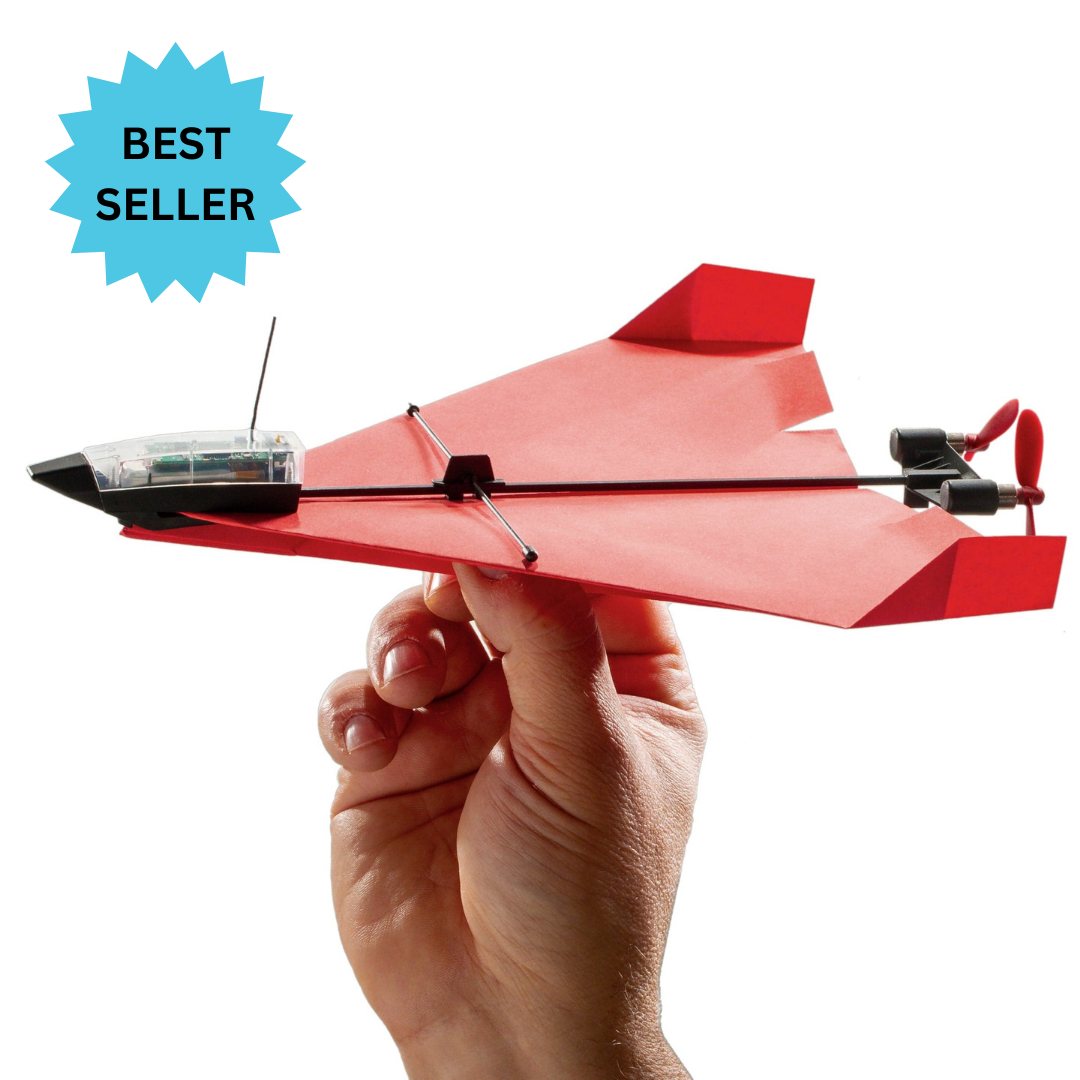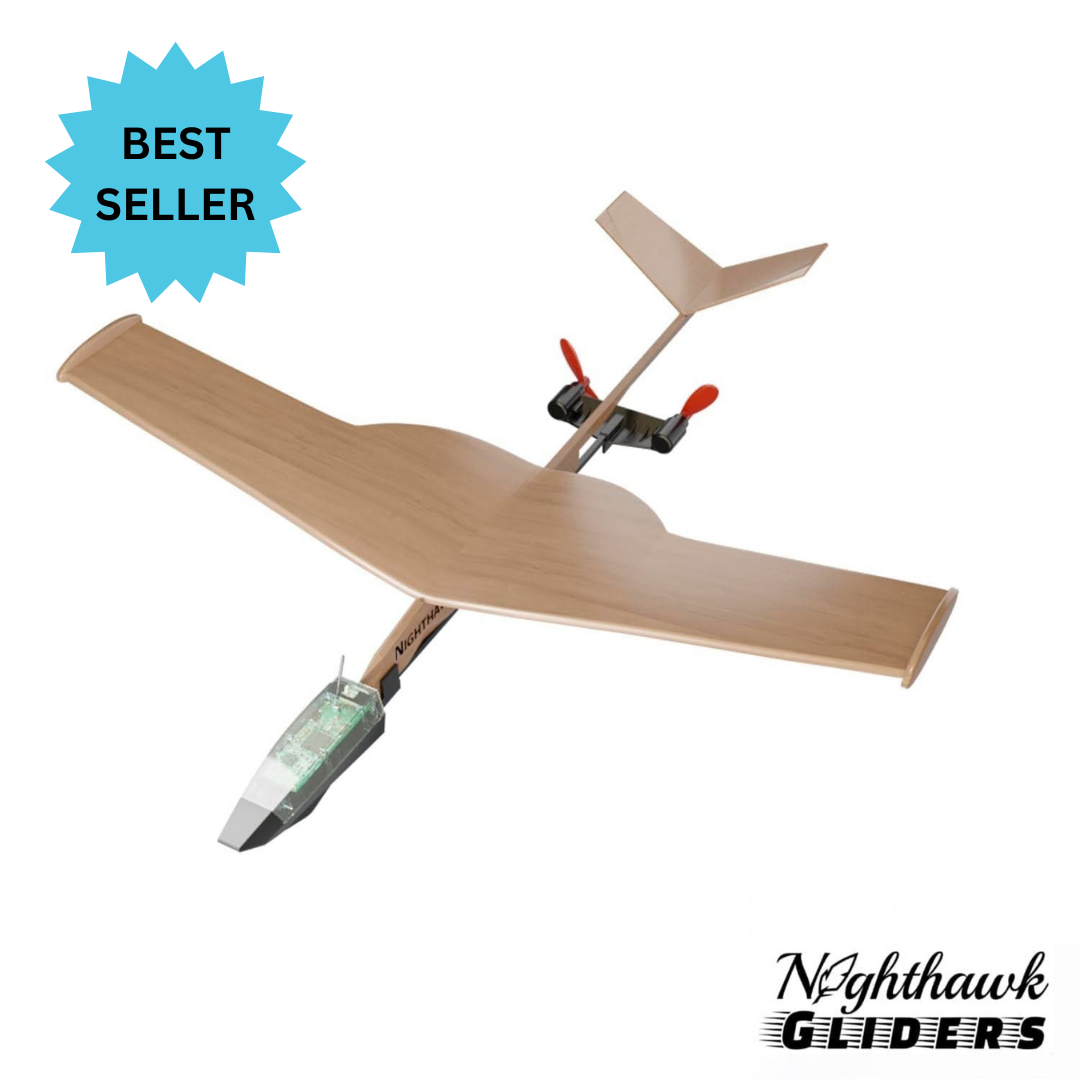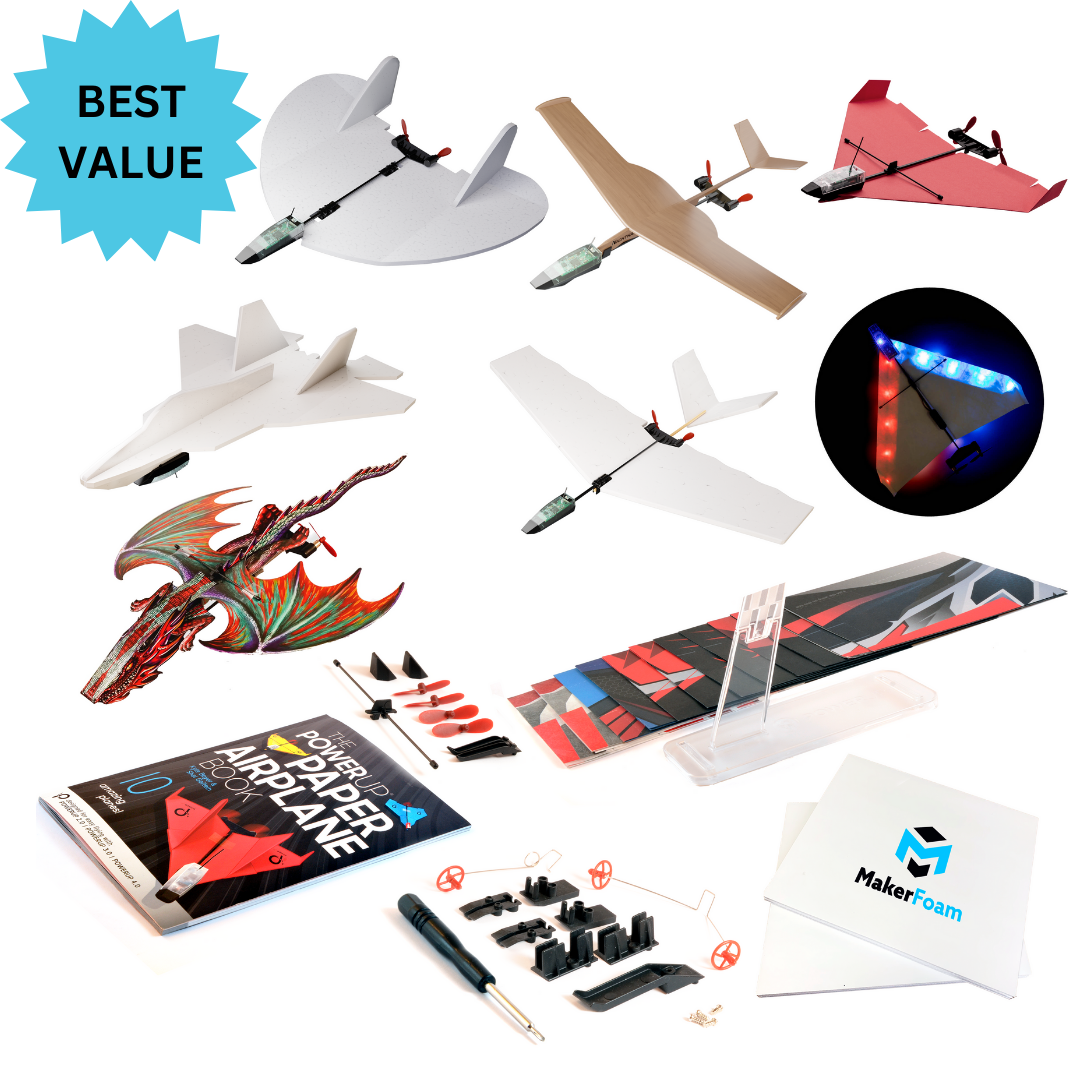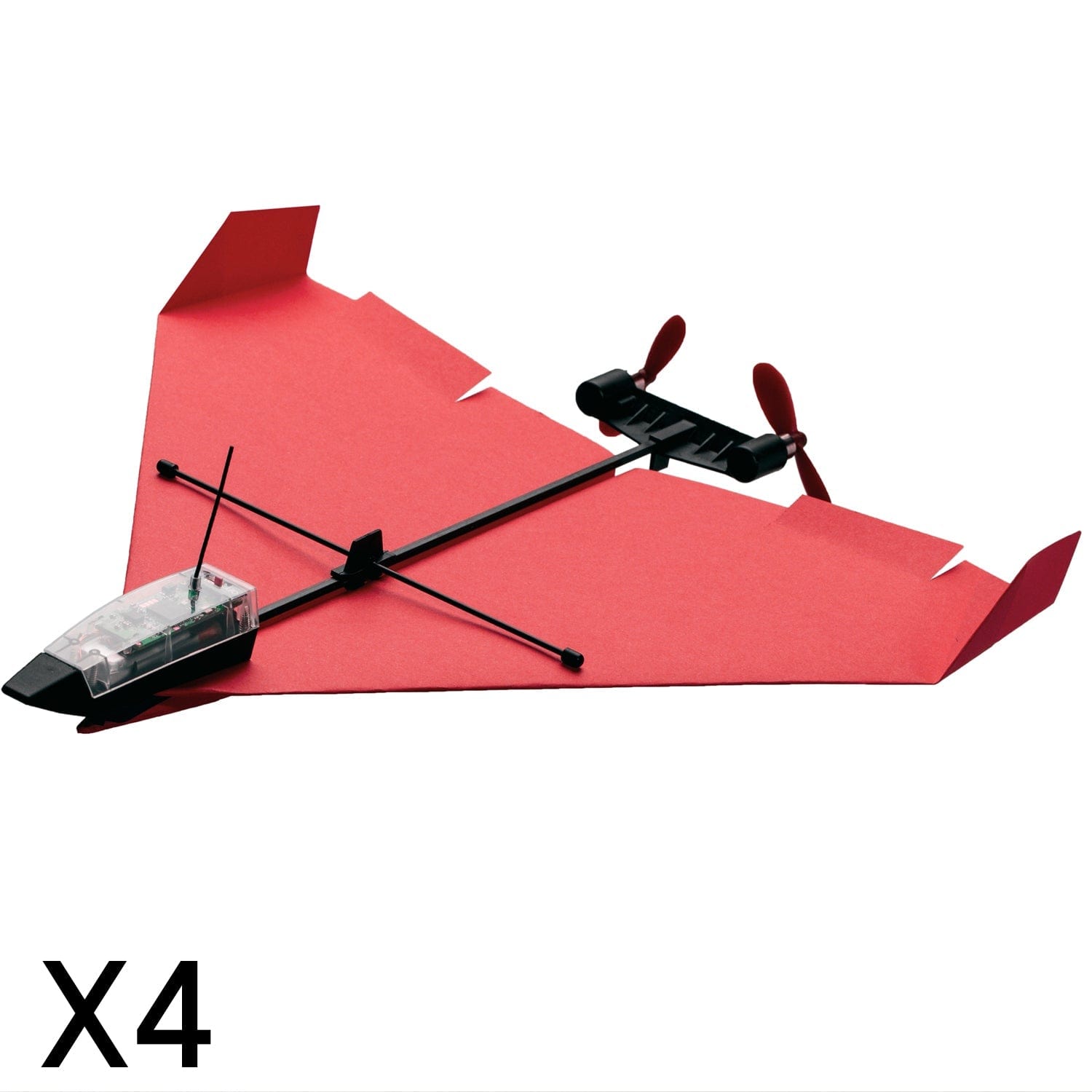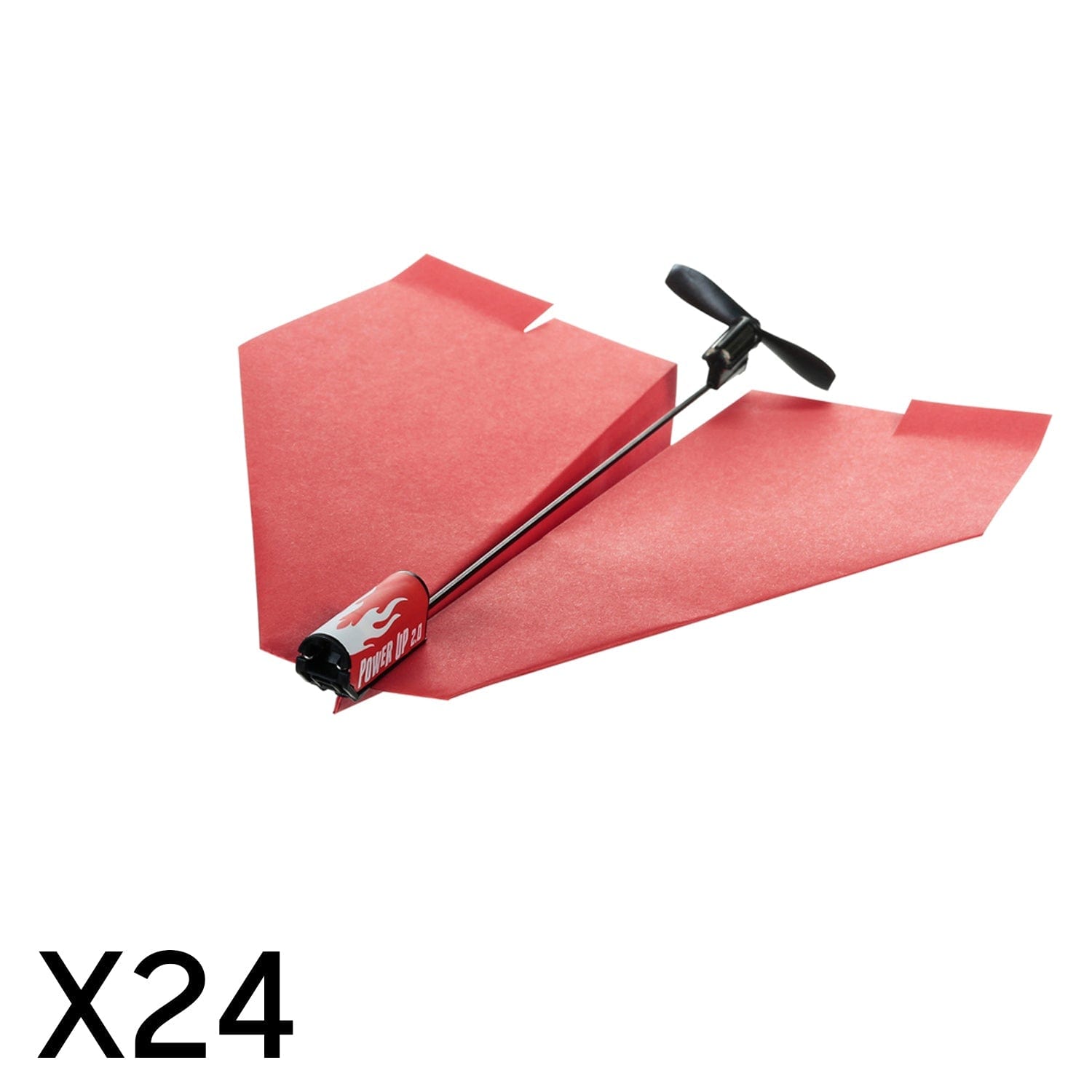FREE SHIPPING ON ORDERS $60+
FREE SHIPPING ON ORDERS $60+
PLANES
BUNDLES
ACCESSORIES
EDUCATORS
History's coolest planes | POWERUP for kids

Adults can be amazed at how curious kids are about machines. You pass something as seemingly mundane as a garbage truck in traffic and your kid’s jaw hits this floor. This is a cool thing, it’s a natural curiosity that you (as a parent or educator) can nurture like a flame.
So what to “feed” kids who get excited by machines? Planes. Planes, planes, planes. The ability to fly is something that never can and never will cease to captivate the human spirit. In the presence of actual flight, everyone feels it first hand. Ever on a commercial flight, look around and watch kids - modern kids who some would say are “jaded” or overexposed to sensory input (likely true) put their phones down and experience takeoff. Flying is one of those things that is understood a thousand, million times deeper through experience.
This “preface” is important because - as a parent or educator reading this article, there’s a chance your intention is to learn about aviation, planes, and the like so that you can teach it. This is a wonderful thing. A potentially very valuable one that can deeper your relationship with your kids and give them an enriching relationship with flight. If this is the case, remember first that getting your kids on a plane or near a plane is always the best thing you can do. It’s one thing to show them very cool 2D pictures, or to share interesting articles with them - but if those “moves” don’t work, don’t be surprised. It’s experience that must come first. Once the experience is in them they’ll have a hunger for more information and ways to “wade” into the waters of aviation. This is also a great time to offer practical steps to take kids into the incredible realm of the possible. This btw is where things like paper airplane designs come in.
More on fun paper airplane designs for kids and beginners here: How to make a paper airplane | POWERUP for kids.
Lockheed SR-71 Blackbird

The Lockheed SR-71 Blackbird is the world’s fastest manned air-breathing jet ever flown with an official top speed of Mach 3.3, although some claim that it is higher and since some parts of the Blackbird project are still classified – so we can’t know for sure.
The Blackbird is incredibly heat resistant
“Flying more than three times the speed of sound generates 316° C (600° F) temperatures on external aircraft surfaces, which are enough to melt conventional aluminum airframes. That's why the SR-71's external skin is made of titanium alloy, to shield the internal aluminum airframe. But the tires, which retracted into the wings during flight, also had to keep from melting! Aluminum was mixed in with latex when the tires were created and they are filled with nitrogen. The tire pressure on the SR-71 was 415 psi (compared to the 32-35 psi in your automobile tires!).” [Thanks to the National Air and Space Museum for the info]
Rutan Voyager

Designed by aeronautics legend Burt Ratan, the Voyager was the first aircraft to fly around the world without stopping or refueling. It was piloted by Dick Rutan and Jeana Yeager. The Voyager’s elegant design is both strong and light - composed almost entirely of lightweight graphite-honeycomb composite material
Supermarine Spitfire

Designed by R. J. Mitchell, the iconic Spitfire’s was one of the word’s first truly high-performance (short-range) fighter plane. The Spitfire’s name is often assumed to derive from its ferocious firing capabilities. But it likely owes just as much to Sir Robert McLean’s pet name for his young daughter, Ann, who he called “the little spitfire”.
The Supermarine Spitfire is a British single-seat fighter aircraft used by the Royal Air Force and other Allied countries before, during, and after World War II. Many variants of the Spitfire were built, from the Mk 1 to the Rolls-Royce Griffon engined Mk 24 using several wing configurations and guns.
XB-70 Valkyrie

The futuristic XB-70A was a nuclear bomber. Originally conceived in the 1950s as a high-altitude, nuclear strike bomber that could fly at Mach 3 (three times the speed of sound) -- any potential enemy would have been unable to defend against such a bomber.
Gossamer Albatross

The Gossamer Albatross is a human-powered aircraft built by American aeronautical engineer Dr Paul B MacCready's company AeroVironment. On June 12, 1979, it completed a successful crossing of the English Channel to win the second Kremer prize worth £100,000
Lockheed Martin F-22 Raptor

The F-22 Raptor is combination of stealth, supercruise, maneuverability, and integrated avionics, coupled with improved supportability, represents an exponential leap in warfighting capabilities. The Raptor performs both air-to-air and air-to-ground missions. The F-22 Raptor has sensor capability, integrated avionics, situational awareness, and weapons.
Eurocopter X³

The Eurocopter X³ is an experimental high-speed compound helicopter developed by Airbus Helicopters. A technology demonstration platform for "high-speed, long-range hybrid helicopter" or H³ concept, the X³ achieved 255 knots in level flight on 7 June 2013, setting an unofficial helicopter speed record
Rutan Boomerang

The Rutan Model 202 Boomerang is a high performance pressurized five-place light twin experimental aircraft. It was designed and built by Burt Rutan to increase performance, efficiency and safety compared to other general aviation aircraft available. The Boomerang is Burt’s solution to a high performance multi-engine aircraft that would not become dangerously difficult to control in the event of a engine failure.
JetCat P200

Yes, the JetCat P200 is a functioning jetpack. The aviation vehicle was flown successfully by Yves Rossy and shows a lot of promise for the future of jetpack technology.
Icon A5 Seaplane
![]()
The ICON A5 is an American amphibious light-sport aircraft designed and produced by ICON Aircraft. A concept aircraft was first flown in 2008, and creation of the production tooling began in December 2012
Cool planes from history | Conclusion
There you have it, some of the coolest planes from history. Good luck and, as always, happy flying!
--
* Note if your kid or student is interested in learning about some of history's coolest aviators and coolest planes check out these kid-friendly resources:
History's Coolest Aviators | POWERUP for kids
Fun answers to your kid's flying questions | POWERUP for kids
---
Sources
Sources for this article, thanks to the following fantastic resources:
Recent Articles
- Why Paper Airplanes Make the Perfect Christmas Gift
- POWERUP 2024 Halloween Contest
- POWERUP Instagram Follower 10K Giveaway!
- A quick history of the paper airplane
- POWERUP School's Out Challenge
- Soar High with Mom: Why POWERUP Is the Perfect Mother's Day Activity
- POWERUP WINTER CONTEST: Most Creative Design
- Easter Joy with POWERUP 4.0: The Ultimate Gift for the Season
- Fun facts about airplanes | POWERUP for kids
- The world's fastest planes | POWERUP for kids


